The automotive industry – the usual suspect!
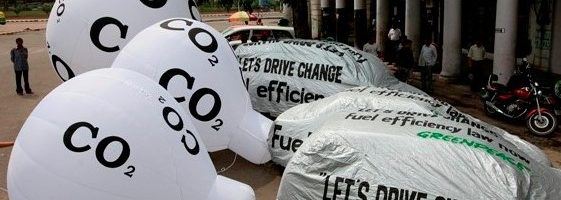
From Model T to Autonomous Vehicle: How is Ford addressing climate change to drive towards a greener future?
Our personal vehicles are a major cause of global warming. The transportation sector accounts for 28% of U.S. greenhouse gas (GHG) emissions (14% worldwide) [1,2], with light-duty vehicles responsible for about 60% of US emissions [3]. Ford, as a market leader, needs to address climate change risk as a strategic priority.
Exhibit 1: U.S. Transportation Emissions by Source [4]
Exhibit 2: Global Greenhouse Gas Emissions by Economic Sector [5]
Primarily, carmakers will need to reevaluate both their supply chain and vehicle models to comply with U.S. emission-reduction targets for 2030, 2040, and 2050, which aim to limit global temperature rise to 2° C above pre-industrial levels. Ford models are very far from achieving these targets, such as the Ford F-Series, which currently accounts for 30% of the U.S. pickup market [6]. Besides regulatory pressure, climate change has resulted in changing customer preferences, with an increased demand for “green” vehicles and alternative transportation [7]. Moreover, investors are showing greater concern for climate change and the associated financial risk [8]. As an industry leader, how can Ford ensure its future survival?
Exhibit 3: Light duty vehicles in the U.S: Lifecycle emissions and related costs [9]
Ford is trying to mitigate climate change risk through a series of short and medium-term measures. These include:
Short term measures:
Supplier management: Ford audits its suppliers to verify compliance with its code of conduct [10] to address areas such as manufacturing impact and responsible sourcing. Beyond auditing, Ford aims to reduce its collective supply chain footprint through its Partnership for a Cleaner Environment (PACE) [11] by building suppliers’ capability to minimize their environmental impact, sharing best practices for reducing energy consumption and emissions. To extend its impact, Ford encourages its suppliers to cascade the information down to their own suppliers.
Exhibit 4: The Five-Step PACE Process [12]
Government and industry partnerships: Ford is actively engaged in several industry forums, including the AIAG’s Environmental Sustainability Advisory Group [13], which educates suppliers and manufacturers about environmental sustainability and develops common metrics and benchmarks to improve sustainability performance. Ford is also involved in regulatory and legislative processes used to set standards, providing information to authorities and sharing its expertise [14].
Manufacturing and logistics efficiency: Ford plans to further reduce emissions by maximizing the use of alternative transportation (e.g. rail, river) and improving freight efficiency (increasing load density to reduce the number of trips and fuel consumption, using regional distribution centers to coordinate deliveries, etc.) [15]. Through its “Plant Energy Team”, Ford is also aiming to maximize manufacturing plant efficiency [16].
Exhibit 5: Ford Plant Energy Team [17]
Medium-term measures:
Investing in sustainable technologies: Fords aims to cut emissions across its portfolio by developing smaller fuel-efficient models, investing in Autonomous Vehicles and alternative fuel technologies, as well as expanding electrification through more efficient electric cars (13 new EVs by 2020) [18, 19].
Increased use of sustainable materials: Ford plans to prioritize locally sourced materials and increase the use of recycled materials. Ford is also exploring how 3D printing could help produce lighter-weight models to improve fuel consumption efficiency. [20]
Exhibit 6: Materials used in a typical vehicle [21]
Although Ford has several initiatives to mitigate climate change risk, there is an opportunity to leverage advanced data analytics, Artificial Intelligence (AI) and Internet of Things (IoT) to further its effort.
The adoption of a set of centralized analytical tools would provide a more visible and connected operations along the supply chain, enabling to assess and diagnose overall efficiency. AI could quickly analyze data to make accurate recommendations about how to adjust plants´ operations to reduce GHG emissions, avoid waste and operate at peak efficiency. Furthermore, AI in Autonomous Vehicles could result in more fuel-efficient driving as machine-driven cars can have smaller engines and use less gasoline than human-driven cars.
Ford could also use IoT as a lever. By 2020, industry analysts estimate that 250 million cars will be connected to the Internet [22]. With new vehicles equipped with smart sensors, embedded connectivity applications and big-data enhanced geo-analytical capabilities, IoT could facilitate increased supply chain efficiency and reduced carbon footprint:
- Geo-analytical tools could enable optimized freight efficiency.
- Vehicles could automatically report fuel usage data to manufacturers to optimize engine design.
- Smart sensors could enable safe driving in closer proximity to other vehicles, improving road space efficiency to leave more space for cyclists, public transport and pedestrians.
As an American corporation, one open question remains on U.S. government’s involvement in climate change mitigation measures. Governments can provide strong incentives to organizations to reduce their environmental impact through legislative and regulatory processes. Trump administration’s denial of global warming and its withdrawal from the Paris Agreement could incentivize Ford to be more complacent in its efforts to mitigate climate change [23]. The E.P.A´s recent repeal of Obama´s policy to curb GHG emissions has furthered a bitter fight over America’s efforts to tackle global warming [24]. Meanwhile, China has surpassed the U.S. in electric vehicle sales and renewable energy capacity, recently announcing a $365B investment to maintain momentum [25]. This puts China in a prime position to lead the world in clean energy and commercialize its innovations globally. With Chinese carmakers benefiting from considerable government support, will Ford be able to sustain its race toward a more sustainable future?
[Word count: 800]
[1] Sims, “Mitigation of Climate Change – Contribution of Working Group III to the Fifth Assessment Report of the Intergovernmental Panel on Climate Change”, Cambridge University Press 2014, accessed November 2017
[2] “Global Greenhouse Gas Emissions Data”, Environmental Protection Agency, https://www.epa.gov/ghgemissions/global-greenhouse-gas-emissions-data, accessed November 2017
[3] “Federal Vehicle Standards”, Center for Climate And Energy Solutions, https://www.c2es.org/content/regulating-transportation-sector-carbon-emissions/#ldv_2012_to_2025, accessed November 2017
[4] Environmental Protection Agency, “Inventory of U.S. Greenhouse Gas Emissions and Sinks 1990-2015”, accessed November 2017
[5] “Global Greenhouse Gas Emissions Data”, United States Environmental Protection Agency, https://www.epa.gov/ghgemissions/global-greenhouse-gas-emissions-data, accessed November 2017
[6] “2016 Statistical Analysis Of The Pickup Market Wars: GM Vs. Ford Vs. FCA Vs. Toyota Vs. …”, Seeking Alpha, https://seekingalpha.com/article/4036949-2016-statistical-analysis-pickup-market-wars-gm-vs-ford-vs-fca-vs-toyota-vs, accessed November 2017
[7] Deloitte, “A new era Accelerating towards 2020 – An automotive industry transformed”, p. 10, accessed November 2017
[8] “Most global investors recognize financial risk of climate change, report finds”, The Guardian, https://www.theguardian.com/environment/2017/apr/26/most-global-investors-recognise-financial-risk-of-climate-change-report-finds, accessed November 2017
[9] Marco Miotti, Geoffrey J. Supran, Ella J. Kim, and Jessika E. Trancik, “Personal Vehicles Evaluated against Climate Change Mitigation Targets”, Environ. Sci. Technol., September 27, 2016, accessed November 2017
[10] “Policy Letters and Directives”, Ford Sustainability Report 2016/17, https://corporate.ford.com/microsites/sustainability-report-2016-17/strategy-governance/governance/directives.html, accessed November 2017
[11] Ford Motor Company, 2016/17 Sustainability Report, p.40, accessed November 2017
[12] “Operations – Environmental Impact of our Suppliers”, Ford Sustainability Report 2016/17, https://corporate.ford.com/microsites/sustainability-report-2016-17/operations/supplier-impact.html, accessed November 2017
[13] “Operations – Environmental Impact of our Suppliers”, Ford Sustainability Report 2016/17, https://corporate.ford.com/microsites/sustainability-report-2016-17/operations/supplier-impact.html, accessed November 2017
[14] Ford Motor Company, 2016 Climate Change Information Request, p.7, accessed November 2017
[15] “Logistics Operations”, Ford Sustainability Report 2016/17, https://corporate.ford.com/microsites/sustainability-report-2016-17/operations/emissions/logistics.html, accessed November 2017
[16] “Energy Use and Greenhouse Gas Emissions”, Ford Sustainability Report 2016/17, https://corporate.ford.com/microsites/sustainability-report-2016-17/operations/emissions/index.html, accessed November 2017
[17] “Energy Use and Greenhouse Gas Emissions”, Ford Sustainability Report 2016/17, https://corporate.ford.com/microsites/sustainability-report-2016-17/operations/emissions/index.html, accessed November 2017
[18] “Reducing vehicles Emissions”, Ford Sustainability Report 2016/17, https://corporate.ford.com/microsites/sustainability-report-2016-17/customers-products/emissions/index.html, accessed November 2017
[19] Ford Motor Company, 2016 Climate Change Information Request, p. 1, accessed November 2017
[20] “Using Sustainable Materials”, Ford Sustainability Report 2016/17, https://corporate.ford.com/microsites/sustainability-report-2016-17/customers-products/materials/index.html, accessed November 2017
[21] “Using Sustainable Materials”, Ford Sustainability Report 2016/17, https://corporate.ford.com/microsites/sustainability-report-2016-17/customers-products/materials/index.html, accessed November 2017
[22] “What the Internet of Things Means for Car Companies”, The Motley Fool, https://www.fool.com/investing/general/2016/04/29/what-the-internet-of-things-means-for-car-companie.aspx, accessed November 2017
[23] “Donald Trump doesn’t think much of climate change, in 20 quotes”, CNN Politics, http://www.cnn.com/2017/08/08/politics/trump-global-warming/index.html, accessed November 2017
[24] “E.P.A. Announces Repeal of Major Obama-Era Carbon Emissions Rule”, The New York Times, https://www.nytimes.com/2017/10/09/climate/clean-power-plan.html, accessed November 2017
[25] “Clean Energy Could Spark a Trade War Between the US and China”, Wired, https://www.wired.com/2017/03/us-china-clean-energy/, accessed November 2017


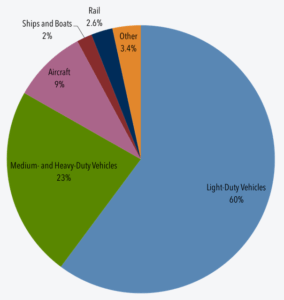
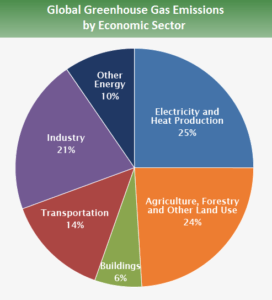


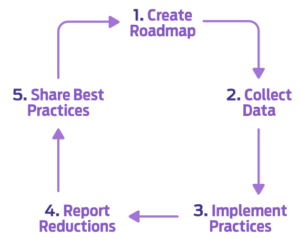
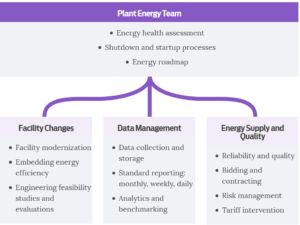
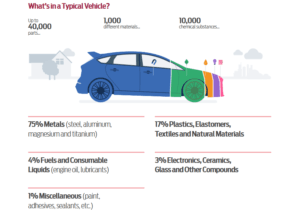
Thanks, Bahia for this thoughtful article. This seems to be a classic case of focusing on the wrong stakeholders. With the progress that Tesla has shown with electric vehicles (and autonomous electric vehicles, soon), I believe consumers are going to begin demanding changes from car companies. Why purchase a non-fuel efficient SUV, or even a mildly fuel-efficient one, when I can purchase a Model X, which looks great and is much better for the climate? As demand continues to grow, prices for these vehicles will come down, eventually becoming standard. Auto companies have been focused on doing the bare minimum for too long, and looking at governments and investors (backward-looking stakeholders to a large extent) to determine what they need to do for the next five years. The companies that will be willing to buck the trend and move fastest towards a truly efficient model are likely to be the only survivors ten years out.
To pause on a nit – I can’t believe that Ford is openly admitting to increasing its utilization of alternative transportation to decrease GHG. Wow! Initially that struck me as a cigarette CEO who does not smoke – a bit hypocritical. On further thought, however, I am really impressed with Ford for openly stating that they look to use alternative transportation in their own supply chain. They are seeing the bigger picture!
After reading this article, I was curious how Ford specifically stacks up against its competitors in its sustainability efforts. According to the annual “Greenest Cars” list compiled by the American Council for an Energy Efficient Economy, which is summarized by the Forbes article below, Ford’s Focus Electric squeaks into the top 10 at #10. Toyota has three cars in the top 10, and surprisingly there is no Tesla!
https://www.forbes.com/sites/jimgorzelany/2017/02/14/the-greenest-cars-for-2017/#4b271ed1ecf1
I agree that Ford needs to continue to establish itself versus competitors that have a reputation for environmental friendliness, but I wonder if they should focus where they are strongest already. According to Business Insider, the Ford F-Series is the number 1 selling car or truck in America [1]. This suggests that Ford may have loyal customers in the pickup truck space that Tesla will have to convert. Thus, Ford may have its greatest chance at making a difference in terms of environmental impact by continuing to improve the truck models that are so popular in the United States.
[1] Benjamin Zhang, “These are the 20 best-selling cars and trucks in America,” Business Insider, July 10, 2017, http://www.businessinsider.com/best-selling-cars-pickup-trucks-vehicle-america-2016-2017-7/#20-hyundai-elantra-208319-sold-during-2016-138-over-2015-1, accessed November 2017.
Interesting article. You mention in great details the issues related to fuel consumption of the cars manufactured by Ford. However you are quite brief on the environmental impact of the supply chain itself. You do mention a couple things such as the materials that could be sourced locally and the supplier management strategy.
There is a lot of numbers and resources online on that topic which are very interesting: [1], [2].
Some solutions include new materials and innovative manufacturing processes [3].
As for your question regarding the future of Ford, I am confident that the company will be able to leverage its experience and large market share/resources to create itself a leading role in the transportation revolution [4].
[1]: The Guardian, “What’s the carbon footprint of … a new car?”, https://www.theguardian.com/environment/green-living-blog/2010/sep/23/carbon-footprint-new-car, Published September 2010
[2]: Martin V. Melosi, “Enviromental Cost of the Automobile Production Process”, http://www.autolife.umd.umich.edu/Environment/E_Overview/E_Overview2.htm, Accessed November 2017
[3]: S.VinodhK & Jayakrishna, “Environmental impact minimisation in an automotive component using alternative materials and manufacturing processes”, Materials and Design, Volume 32, Issue 10, December 2011
[4]: Bruce Kennedy, “New Ford focus? Automaker says sustainability is Job One”, GreenBiz, https://www.greenbiz.com/blog/2012/06/20/ford-focus-sustainability-center-strategy, Published June 2012
Thanks for this interesting article! It’s a great reminder of the fact that sustainability includes more than just the spec’s of the final product. Manufacturers need to consider the materials used, the transportation costs of the supply chain and the manufacturing process itself when evaluating their environmental impact. It’s natural to look at a Tesla and to think of it as the cleanest vehicle in the world, but if you consider how the materials of the vehicle (e.g. lithium ion batteries), how they are sourced and what energy is used to charge the vehicle a different picture emerges. There’s some interesting writing about this on the web, for instance here [1].
[1] Lizzie Wade, “These are the 20 best-selling cars and trucks in America,” Wired, March 31, 2016, https://www.wired.com/2016/03/teslas-electric-cars-might-not-green-think/, accessed November 2017.
This article remembers are that we, humans, are all to be blamed for climate change. Everybody has a carbon footprint and transportation is a big part of that. As customers become more aware of this issue, more environmentally friendly products will be demanding and Ford needs to be prepared for this shift. The demand for Tesla products [1] show customers are willing to consume this type of product and even pay a premium for it.
There is a fundamental question here: where should Ford focus its effort to become a more environmentally friendly company? Although the supply chain is extremely important, I believe that Ford should focus more on its car offering. There is a risk of missing market timing and that your competitors have an offering more compelling to customers. Electric cars reduce carbon footprint and demand for this product will make a huge impact in the automotive industry.
[1] https://electrek.co/2017/08/07/tesla-model-3-annual-demand-elon-musk/